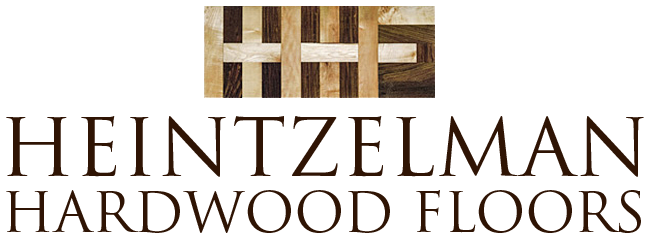From carpet to tile, the options for home flooring are nearly endless, but one material is the acknowledged timeless standard: hardwood. From domestic oak to Brazilian Ipe, wood flooring comes in many varieties, styles, widths, textures, and colors. Working with Heintzelman Hardwood Floors, you can choose any wood, any color, and we'll find it for you.
If you already know what you want for your project, let's go! We'll set up a time to talk you through the pros and cons of the material you are interested in for your application and help you select the best hardwood flooring for your style, your budget, and your space.
Not sure what you want? Here’s a little information on hardwood flooring to get you started …
Wood Species
Hardwood species are typically categorized by “domestic” or “exotic”. Traditional hardwood floors are domestic oak and for very good reason. Oak makes an ideal flooring material for its strength, durability, and hardness. An open grain wood, oak has a more visible grain pattern than closed grain woods. This makes oak more forgiving of dirt and dust and minor damage or imperfections.
Because it is a readily available domestic wood, oak is more affordable than any exotics and most other domestics. It is also readily available, so unlike some harder to find woods where we recommend buying and storing extra stock for future needs, is easy find when you need to make repairs or add additional square footage. From a design perspective, oak goes with everything … its consistency and innate beauty make it a perfect foundation for your prized possessions. When considering all of these factors, there really is no better option.
That said, of course there are many other beautiful woods. When considering options, particularly for exotic and rarely used woods, it is important to check both price and availability before making a final decision. While prices vary widely, domestic hardwoods typically start at $3.00 to $3.50 per square foot. Exotic hardwoods start at $5.50 to $6.00 per square foot. Following is a list of some varieties of both domestic and exotic woods that can be used for flooring.
Domestic Hardwoods
- Red Oak
- White Oak
- Hickory
- Maple
- Walnut
- Cherry
- Pine
- Beech
Exotic Hardwoods
- Ipe (Brazilian Walnut)
- Cherry
- Chestnut
- Teak
Plank Width
The traditional hardwood flooring that most people think of is 2-1/4” wide and 3/4” deep, tongue and groove oak planks. This board presents the elegant and timeless look that defines “hardwood flooring.” Planks can also be selected in other traditional widths from 3” to 3-3/4” or wide planks ranging from 4” up to 7” depending on the preferred design aesthetic.
Plain Sawn/Flat Sawn vs. Quarter Sawn or Rift Sawn
How a piece of lumber is cut from a log at the sawmill has an enormous impact on the strength, beauty, and durability of the wood.
Plain sawn (also known as flat sawn) is the most common lumber. It is the least expensive way to cut logs into lumber because the boards are sawn “flat” from the entire log with the growth rings generally 30 degrees or less to the face of the board. This is often called “tangential” grain and produces a cathedral pattern on the face of the board.
Quarter sawn wood takes more handling at the sawmill and produces more waste, so is therefore typically more expensive than plain sawn. However this cut has produces straight grain pattern that is both more beautiful and more durable than plain sawn boards. Quarter sawn gets its name from the logs being first sawed into four quarters at a radial angle (intersecting the center). This results in the annular growth rings intersecting the face of the board at a 60 to 90 degree angle. In red oak and white oak, this cut also produces dramatic flecking creates an additional degree of interest in designs.
Rift sawn is the least common and most expensive cut. The annular rings are between 30 and 60 degrees with 46 degrees being optimal. The logs are milled perpendicular to the growth rings, which produces a linear grain pattern with no flecking and is incredibly stable and strong. However this type of milling produces the most waste, which increases the cost of this lumber.
At Heintzelman Hardwood Floors, we focus on quality. Hans has located and now works directly with a mill where we are able to get high-quality, beautiful rift- and quarter-sawn oak for our clients for a price comparable to common plain sawn boards.
Color
Wood is a beautiful material, and as such, Hans Heintzelman prefers and recommends that clients allow him to maintain the natural beauty of their selected wood by using only clear, resin epoxy that highlights the wood’s own color and grain. Traditional red oak planks have naturally rich, warm colors with mineral streaking that is brought out by the paint and other colors in the room. White oak is more homogenous, creating a more contemporary, sleek look of “oneness” throughout the home or room. Each type of wood has its own coloring and properties that will create a distinctive feel, even without the use of artificially colored stains and sealants.

